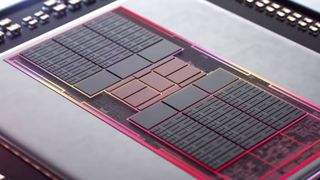AMD reveals UDNA to Rival Nvidia’s CUDA Ecosystem
At IFA 2024 in Berlin, AMD’s Senior VP Jack Huynh announced a major shift in the company’s GPU strategy. AMD plans to merge its RDNA (consumer) and CDNA (data center) architectures into a single unified microarchitecture called UDNA. This development marks AMD’s bid to take on Nvidia’s long-established CUDA ecosystem, signaling a potential new era in GPU technology. By prioritizing developer accessibility, AMD hopes UDNA will simplify programming across platforms and accelerate market gains, especially in AI and gaming.

The History Behind AMD's Split Microarchitectures
Since 2019, AMD has maintained two distinct microarchitectures: RDNA for gaming graphics and CDNA for high-performance computing (HPC) and AI workloads. This bifurcation allowed AMD to optimize its GPUs for different sectors. However, Huynh explained that maintaining two separate architectures created challenges for developers, which has driven AMD toward unifying these platforms. “We forked it because of micro-optimizations, but now that we have scale, we need to unify,” Huynh said. This new strategy is aimed at simplifying the development process for millions of potential developers.
Developers Welcome the Shift to UDNA
During the announcement, Huynh emphasized the value UDNA would bring to the developer community, stressing the importance of reducing complexity. The move toward a single architecture will allow for greater backward and forward compatibility, avoiding the need for constant recalibration of memory systems, which has been a challenge with RDNA iterations. Developers, Huynh noted, have responded positively to the plan, welcoming the reduction in complexity. However, the timeline for the full implementation of UDNA remains undisclosed.
- Advertisement -

Confronting Nvidia’s CUDA Dominance
Nvidia’s CUDA, which stands for Compute Unified Device Architecture, has dominated the AI, HPC, and gaming markets for nearly two decades. Huynh acknowledged that AMD’s goal is to match CUDA’s widespread adoption, stating that Nvidia currently boasts around four million developers working within its ecosystem. While AMD has been relying on its open-source ROCm software stack, UDNA could help bridge the gap, especially as AMD looks to attract developers with simplified, streamlined tools.
Challenges and Criticism of AMD’s ROCm Stack
AMD has faced ongoing criticism for the scattered efficiency of its ROCm stack. The 2022 acquisition of Xilinx brought leadership changes aimed at tightening control over ROCm development, yet there’s still work to be done. Despite the emergence of new open software ecosystems like the UXL Foundation, AMD remains committed to enhancing ROCm while introducing UDNA to better compete with Nvidia’s CUDA.

What UDNA Could Mean for Future GPU Development
Though details on UDNA remain scarce, the unified architecture is expected to bring improvements, including better AI acceleration on client GPUs. While Nvidia integrated tensor cores into its GPUs starting in 2018, AMD’s RDNA series has lagged in dedicated AI processing capabilities. Adding full-stack support for tensor operations, already present in CDNA, will be crucial for UDNA’s success. Huynh hinted at UDNA’s potential to reshape AMD’s approach, but cautioned that the new architecture is still a few product generations away, with RDNA 4 on the horizon.
The Road Ahead for AMD and UDNA
Despite the ambitious plans, Huynh did not commit to a release date for UDNA. However, with AI and HPC markets expanding rapidly, AMD is under pressure to execute this new strategy effectively. As Nvidia continues to build on its CUDA empire, UDNA will play a critical role in AMD’s bid to level the playing field, especially as it faces increasing competition in both consumer and data center markets.








